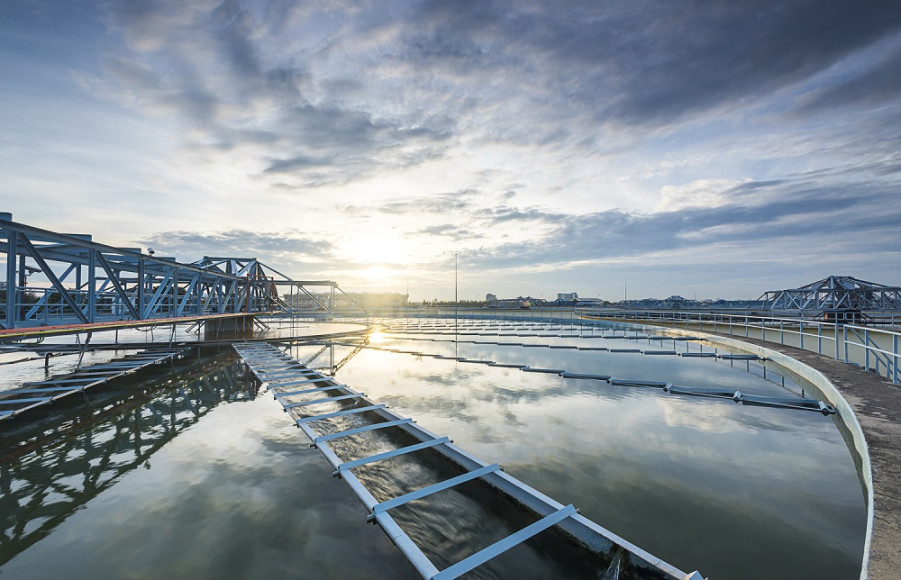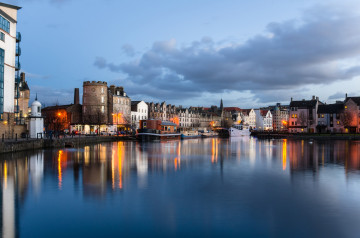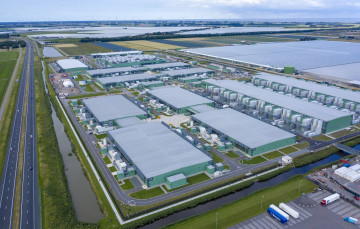The World Resources Institute (WRI) predicts that by 2030 there will be an estimated 56% gap in water availability and demand. Essentially, that means our collective water needs will be unable to be met by about half. Simultaneously, the Carbon Disclosure Project (CDP) estimates the cost of inaction could be upwards of 5x the cost of action. That’s why circularity is becoming an even more important tool toward addressing this issue.
In our webinar entitled “Demystifying Water Circularity and the Energy/Water Nexus: Strategies for Sustainable Resource Management,” Erica Pann, EIT, CWEP, Water Stewardship Services Leader, Antea Group USA, leads a conversation with esteemed guest panelists Una Harcinovic, Water Stewardship Lead, World Business Council for Sustainable Development (WBCSD), Karen Kennedy, Sustainability Senior Manager, PepsiCo, and Will Hewes, Global Lead Water Sustainability, Amazon Web Services that aims to demystify circularity and the energy-water nexus. They also underscore the significance of water circularity and the energy/water nexus in their respective organizations' sustainability approaches.
If you missed it, check out the full webinar on-demand below.
Watch On-DemandPepsiCo's Commitment to Sustainability: A Holistic Approach
In 2021, PepsiCo launched their PepPositive agenda, which spans their entire business ecosystem. This aims to put sustainability at the center of their business to inspire positive change for the planet and people. There are three big pillars: positive agriculture, positive value chain, and positive choices.
Under the positive value chain, PepsiCo has a goal to reach net-zero emissions by 2040, and this pillar also includes their goal to be net water positive by 2030. This extends through all of PepsiCo, including their partners, franchise bottlers, co-manufacturers. and more.
They aim to use more recycled water than fresh in their business. Water circularity is very important in this ambition. Efficiency is of course important, because the less water they use in their business in the first place, the better.
One major hurdle for PepsiCo when it comes to water reuse is that across the globe, the regulatory frameworks are different. Some regions have no regulations, and some have strict regulations in terms of water reuse and what is allowed and not allowed. In order to effectively drive water reuse and circularity, the industry needs regulators and policy makers to come together in terms of having an open view, letting the science dictate what’s safe and not safe, and working hand-in-hand with companies that want to do this type of work.
AWS's Sustainable Path: Leveraging Water for Cooling and Conservation
Amazon Web Services uses water for cooling their data centers because it helps reduce their energy use, which in turn helps them meet two of their key sustainability commitments.
First, they aim to have 100% renewable energy by 2030, and they are on track to meet it five years early by 2025. Second, they launched a climate pledge which commits AWS to being net-zero carbon as a company by 2040. So, by using water for cooling, that allows them to reach their goals sooner and use less energy. The alternative is using air conditioning, which uses a ton of energy. So, they can avoid that by using water. But, they also have to be careful about how they use water. This is the energy/water nexus. They could save a lot of water by using more energy, and, conversely, they could save a lot of energy by using more water for cooling.
At the end of 2022, they launched the Water Positive Program to complement their renewable energy and net-zero carbon goals to make sure they are managing energy and water together in a way that’s responsible for the planet, communities, and their customers. The Water Positive Program has four key strategies:
- Water efficiency – This includes working to circulate water through their cooling systems as many times as possible to reduce the amount of water they’re withdrawing from a water system or from the environment. Also, their water efficiency metric is about .25 liters of water / kilowatt hour of energy, whereas the industry average is around 1.7-1.8 liters / kilowatt hour of energy.
- Sustainable water sources – They look to use recycled water for cooling wherever possible. Recycled water can be treated sewage, which is the type of water you can’t reuse in people’s homes. So, by using this recycled water, they’re leaving higher quality recycled water for other things in the community like in-home water systems.
- Community water reuse – Zero liquid discharge (ZLD) may not always be the most desirable approach due to its high energy requirements to achieve maximum efficiency. However, AWS has found an alternative solution in certain cases. Instead of undergoing energy-intensive treatment processes, AWS can directly provide the used cooling water to a third party. These recipients can effectively utilize the cooling water even after it has served its purpose for Amazon. Remarkably, in one of their largest regions, AWS is successfully sending almost 100% of their used cooling water directly to farmers. The farmers can utilize this water for irrigation purposes without requiring any additional treatment. This approach demonstrates a sustainable and efficient way to repurpose water resources and support agricultural needs.
- Water replenishment – AWS works to invest in replenishment projects around the world, including projects that restore watersheds, eliminate water waste, and bring access to clean water where communities lack it.
These four strategies will help AWS meet their water positive goal by 2030.
WBCSD Empowering Companies: Driving Circular Strategies and Reporting
Just this May, WBCSD launched an updated version 4 of the Circularity Transition Indicators report. This provides a reliable framework and metrics that companies can use to measure their cyclic performance, strengthen their reporting capabilities, and also get an insight into how to increase circularity throughout their business value chain that can lead to companies seeing how they can reduce impacts on climate and nature.
The overall purpose of water circularity is to lower freshwater consumption and ensure water is available for all resource uses and the environment. This means looking at water and assessing it at local water catchment level.
WBCSD defined water circularity through three indicators:
- Percentage of circular water inflow – Is sourced water replenished faster than it is being withdrawn?
- Onsite circulation – How many times does the average drop of water cycle through the facility?
- Percentage of water outflow – Is water safely returned to the local watershed for ecosystems to continue to thrive?
In addition to their CTI Version 4, they launched their Wastewater Impact Assessment Tool (WIAT) at this year’s UN Water Conference. This tool allows for a site level assessment of the pressures on nature and resulting impact on climate biodiversity and water security resulting from industrial wastewater.
It takes data at a site level and calculates three impact indicators: water quality, water availability, and Greenhouse Gas (GHG) emissions from wastewater treatment. Additionally, the tool pulls in contextual data from credible and widely used global data sources to fully understand the change in the state of nature locally. Ultimately, it gives a visualization of the impact of wastewater at a site level for as many sites as a company wants. Then the company can compare site vs. site and prioritize where action is most needed to have the greatest positive impact.
WIAT also incorporates links to global reporting and disclosure frameworks like CDP and GRI. By inputting data into the WIAT tool and generating results, you can then copy and paste those results into CDP and GRI.
This tool is very flexible, so wherever you are in your water stewardship journey, whether you’re at the beginning or more mature such as AWS and PepsiCo, it can calculate whatever data you have. Ultimately, WIAT is the very first step for businesses on the path to creating science and impact driven water stewardship strategies. None of the data you input is saved or stored anywhere, so it’s completely confidential. It’s free to the public and available online.
Conclusion: Embracing Circularity for a Resilient Water Future
In conclusion, now is the time to address the impending water crisis, and water circulatory is a crucial tool in tackling this issue. Circularity offers a promising solution by treating and reusing water within a closed-loop system. Companies like PepsiCo and AWS are leading the way in their industries and focusing on achieving net water positivity and integrating water management into their operations.
The World Business Council for Sustainable Development (WBCSD) provides frameworks and tools like the Circularity Transition Indicators and the Wastewater Impact Assessment Tool (WIAT) to support companies in measuring and improving their circularity efforts. In summary, there is hope that through the use of tools like WIAT, collaborative efforts, innovative solutions, and policy support, we can all effectively tackle the water crisis and create a sustainable future.
Want to learn more about water stewardship? Download our Water Risk Assessment Methodology!
Want more news and insights like this?
Sign up for our monthly e-newsletter, The New Leaf. Our goal is to keep you updated, educated, and even a bit entertained as it relates to all things EHS and sustainability.
Have any questions?
Contact us to discuss your environment, health, safety, and sustainability needs today.







